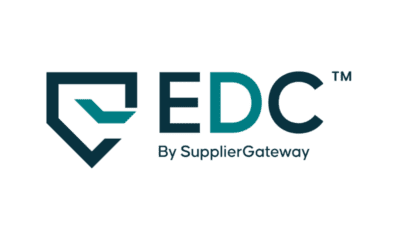You know that managing stakeholders is crucial in healthcare procurement. But with tight budgets, complex regulations, and so many people to keep happy, stakeholder management in healthcare can feel overwhelming. How do you ensure you’re meeting the needs of physicians, administrators, patients, and suppliers—all while staying compliant and within budget? The good news is, that with some tried-and-true best practices, you can master the art of stakeholder management and make the procurement process run smoothly. In this essential guide, we’ll walk you through the key steps to identifying your stakeholders, understanding their needs, and developing a comprehensive stakeholder management plan. By the end, you’ll feel equipped with the skills and strategies to collaborate with even the most demanding stakeholders and ensure successful healthcare procurement at your organization. So take a deep breath—we’ve got you covered.
Why Stakeholder Management Is Crucial for Healthcare Procurement
Why Stakeholder Management Is Crucial for Healthcare Procurement
As a healthcare procurement professional, engaging stakeholders at all levels is key to your success. Stakeholders provide valuable knowledge and insight into the needs and priorities of your organization. Their input helps ensure you’re sourcing the right products and services at the best value.
- Patients and the community you serve should be top of mind. What supplies and equipment will provide the best care and experience for them? Talk to patient advocacy groups to better understand needs and expectations.
- Employees, from doctors and nurses to support staff, interact directly with supplies and equipment. Get their feedback on what’s working and not working to guide purchasing decisions.
- Suppliers are essential partners in healthcare procurement. Work closely with them to find innovative solutions that improve outcomes, reduce costs, and enhance sustainability. Long-term, trusted relationships with suppliers benefit all parties.
- Leadership, executives, and board members establish key objectives and priorities for your organization. Engage them regularly to align procurement strategies and goals. Discuss how sourcing and supplier management can support critical initiatives.
- Shareholders and donors provide funding and resources. Demonstrate how their investments are enabling high-quality, cost-effective care. Be transparent in reporting key procurement metrics and successes.
Effective stakeholder management in healthcare procurement requires proactive communication, a collaborative approach, and a shared commitment to positive outcomes. By engaging stakeholders at all levels, you’ll gain valuable insights to make strategic sourcing decisions that maximize value for your organization and the patients you serve.
Identifying Key Stakeholders in the Procurement Process
When it comes to managing stakeholders in healthcare procurement, the key is identifying who’s who. The people involved in the process can have a huge impact on a project’s success or failure.
Some of the most important internal stakeholders are the procurement managers and budget managers. They control the purse strings, so you’ll want to keep them in the loop and get their buy-in at every stage. Make sure to communicate how your procurement plans align with their goals and priorities.
Patients, healthcare providers like doctors and nurses, and those who finance healthcare services are also stakeholders to consider. Their needs and preferences shape what’s being procured, so engage them early and often. Set up focus groups, send surveys, or talk to them directly. And don’t forget the chief medical officer and other healthcare executives – they’re responsible for the organization’s overall direction, so keep them informed of how your procurement will benefit their strategic vision.
In healthcare IT projects, key players range from the chief information officer to end users like pharmacists or admissions staff. Identify the groups who will interact with a new system or technology and get their input. Address their concerns now to achieve higher adoption and satisfaction later.
With so many interested parties, managing stakeholders in healthcare can seem complicated. But by determining who they are, understanding their priorities, and communicating openly and frequently, you’ll gain their support and set your procurement efforts up for success. Keeping all the players happy may not always be easy, but it’s well worth the effort.
Strategies for Engaging Internal Stakeholders
Engaging your internal stakeholders is key to successful healthcare procurement. Here are some effective strategies to get them on board:
Communicate Early and Often
Keep lines of communication open from the start. Meet with key stakeholders like procurement managers and budget operators before the procurement process begins. Explain the goals, timeline, and how their input will shape the final strategy. Provide regular updates as things progress to avoid surprises and ensure continued buy-in.
Gather Input and Feedback
Ask stakeholders for their perspectives and priorities. What are their needs and concerns? What outcomes do they want to see? Listen with an open mind and incorporate their feedback into the process. People are more likely to support decisions they have helped shape.
Address Questions and Concerns
Be proactive in addressing issues that could derail progress. Meet with any skeptical stakeholders to understand their objections and find common ground. Be transparent by sharing data and evidence to build confidence in the strategy. Compromise when possible to bring people together around the best solution.
Highlight Benefits and Value
Help stakeholders see why this procurement strategy benefits the organization and their roles. For example, discuss how a new healthcare information system could reduce costs, improve data access, and streamline workflows. Appeal to both rational and emotional motivators to gain their full backing.
Provide Ongoing Education
Even after a procurement is completed, continue engaging stakeholders by offering educational resources and training. This helps ensure new systems and processes are used properly and people feel comfortable with changes. Their continued support will be vital for long-term success and future procurements.
With open communication, meaningful input, and a focus on benefits and value, you can turn skeptics into champions and empower stakeholders to aid your healthcare procurement efforts every step of the way.
Building Relationships With External Stakeholders
Building strong relationships with external stakeholders is key to success in healthcare procurement. As a procurement manager, you should focus on connecting with suppliers, contractors, and vendors. Some tips to keep in mind:
Meet in Person When Possible
While calls and emails have their place, face-to-face meetings are ideal for building rapport and trust. Take the time to meet with key suppliers in person, especially when first establishing a relationship or partnership. Discuss goals, priorities, and ways you can support each other.
Communicate Openly and Often
Make communication with external stakeholders a priority. Be transparent about needs, objectives, and any issues that arise. Ask questions and listen to their concerns as well. An open flow of information will lead to a mutually beneficial relationship where each party feels heard and respected.
Provide Value
Think about ways you can add value for suppliers and vendors. Offer to promote their business to other healthcare organizations or highlight them as a trusted partner. Consider joint marketing or co-branding opportunities. When external stakeholders see you as a source of value, they will be more invested in the partnership.
Address Problems Quickly
When problems inevitably crop up, work with suppliers directly to find solutions. Be responsive, flexible, and willing to compromise. Difficult conversations are much easier to have when you’ve already built a foundation of goodwill and trust. Focus on resolving issues together rather than assigning blame.
Thank and Recognize Good Partners
Expressing gratitude and recognition is a simple way to strengthen external relationships. Send thank you notes or small gifts to show your appreciation. Highlight exceptional vendors and suppliers on your website or in company communications. Let them know their good work and partnership does not go unnoticed.
Following these best practices for building connections with suppliers, contractors, and vendors will lead to more productive, long-term relationships in healthcare procurement. Strong external partnerships are crucial for success, so make stakeholder management a priority.
Implementing a Stakeholder Management Plan for Success
A stakeholder management plan is key to ensuring procurement success in healthcare. As a procurement manager, your job is to keep all parties satisfied and help them achieve their goals. Strong relationships with internal customers and key stakeholders will make or break your procurement initiatives.
Identify Key Stakeholders
The first step is identifying who your stakeholders are. These could include physicians, nurses, department heads, executives, suppliers, etc. Understand their needs, priorities, and pain points.
Engage Stakeholders Early
Engage stakeholders as early as possible in the procurement process. Explain the goals and objectives, get their input, and address any concerns. This will minimize objections and roadblocks down the line. Regular communication and updates are important to keep stakeholders informed and supportive.
Objective Evaluation
Work with stakeholders to establish objective criteria for evaluating suppliers and solutions. Focus on critical factors like quality, service, innovation, and total cost – not personal preferences. An impartial, data-driven approach will lead to the best outcomes.
Address Concerns
Be proactive in identifying and addressing stakeholder concerns. Have open discussions to understand different perspectives and find common ground. You may need to get creative to satisfy everyone’s needs. Compromise and cooperation are key.
Measure Success
Finally, work with stakeholders to determine key performance indicators (KPIs) to measure the success of procurement initiatives and ensure goals are met. Then monitor and report on these KPIs regularly to demonstrate the value being delivered. Make adjustments as needed to optimize results.
Following these best practices will help you implement an effective stakeholder management plan. Strong relationships, open communication, and a collaborative approach are essential to success in healthcare procurement. Focus on understanding needs, building consensus, and delivering measurable results. Your stakeholders will appreciate your efforts!
Conclusion
You now have the essential guide to stakeholder management for healthcare procurement. By identifying your key stakeholders, understanding their needs and priorities, and crafting a tailored communications plan, you’ll be well on your way to driving impact and change. Stay engaged, be transparent, and focus on building trust and mutual understanding. At the end of the day, it’s about people – your colleagues, partners, and communities you serve. Do right by them, keep the lines of communication open, and make decisions that align with your organization’s mission. Stakeholder management is challenging work, but also rewarding. Keep at it, learn from both successes and failures, and you’ll be excelling at it in no time. The future of healthcare depends on it.












